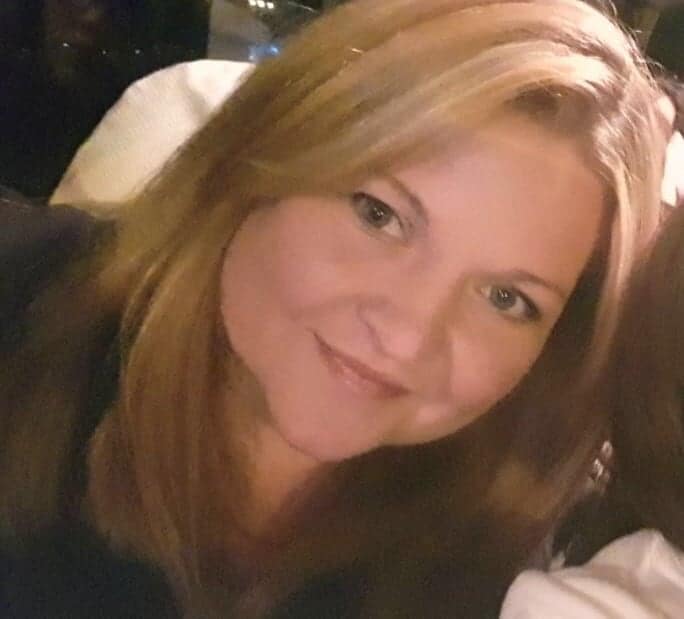
Caroline Pope is a renowned animal communicator, craniosacral therapist, and NES therapist. She has spent years developing her skills and has helped countless clients connect with their animals in a profound way. Caroline’s unique approach combines her deep understanding of animal behavior with her expertise in bodywork and energy medicine, allowing her to address not only physical issues but also emotional and energetic imbalances. In this interview, we’ll dive into Caroline’s background, her work with animals, and her approach to holistic healing.
Please tell us a bit about your background and what inspired you to continue this path professionally?
I come from a background of veterinary nursing, with some experience in truck driving and McDonald’s Management but mostly vet nursing. Well before the age of the internet a friend handed me a book that would change the course of my life. The book was “Animal Communication” by Arthur Myers, a Washington Post journalist who, interestingly enough, was not an animal communicator himself.
As I began reading the book, I was immediately struck by its opening words: “I am a skeptic.” This resonated with me, and I felt drawn to continue reading. Little did I know that this book would spark a new passion in me and set me on a path that I never could have anticipated.
Looking back, I realize that if I had read some of the other books on animal communication that I later encountered, I likely would never have pursued this path. But something about Myers’ approach, and his admission of skepticism, spoke to me on a deep level. It was as if I was meant to read this book, to begin exploring the possibility of communicating with animals.
I was walking down the paddock when the first horse I saw seemed to be communicating with me. It told me it wanted clean water I was taken aback but I quickly checked the water, and to my surprise, there was none. From that day, every time I saw poor old Roanie, he would stop, plant his feet, and gaze at me. For two years, I didn’t hear anything more from him.
Then, something remarkable happened. My horse got seriously ill with the Ross River virus, and the vets could do nothing for him, they gave me the number of a knacker, his gum color had turned completely white. I contacted the woman I knew who did Reiki, as I’d written to some animal communicators via snail mail (pre-internet) and all said to try Reiki. I had hated my previous Reiki experience doing Reiki 1. I spoke to my Reiki teacher, and she was very understanding and suggested she could help. Later, I discovered that she had contacted her Reiki master and told her about the situation as she had never done Reiki on a horse and panicked on what to do.
She called me and said there were a couple of things that she had written down. I went over to her and grabbed the notes, and as I read them, I realized that she had tapped into animal communication.
I went down to the paddock with my horse’s paper and dragging him into the stable as no one would be seeing me talk to a horse – how things have changed. I went through the list in detail of what Martine had said, and I responded with my own perspective. The next day, my horse was completely healed. The vets were amazed, and he didn’t experience any of the usual side effects of Ross River.
At that moment, I wasn’t jumping up and down and screaming with joy. Instead, I thought to myself, “Now I have to do Reiki 2.” I still didn’t enjoy it, but I found that distant Reiki was the only way to tap into certain things. I worked at it every day, giving myself countless migraines, seven days a week, for a couple of years before I was able to crack face-to-face Animal Communication. Even then, it was only because I was dragged along with a vet friend of mine who needed help with a couple of cats. I got it straight away and have never looked back since.
What are the main services that you offer?
Craniosacral Therapy (CST) which is a technique that originated from osteopathy. As someone who suffered from migraines due to thyroid issues, I had tried several medications like morphine and pethidine with no success. Fortunately, CST provided the relief I needed. I was so impressed with the results that I asked my CST therapist to work on my horse, Doc, the one that had contracted Ross River. Despite her limited knowledge of equine anatomy, my therapist agreed to work on him. To my surprise, Doc’s temporal bones and ears were severely jammed. After the therapy, Doc no longer displayed any hesitance or discomfort when wearing his bridle. I was thoroughly impressed and became a firm believer in CST.
She then recommended a CST practitioner to partner with. During the sessions, I would ask the therapist about any unusual spots I noticed, and he would identify them and perform deep releases, we made a great team. However, the therapist eventually stopped practicing and my clients suggested I take up the practice instead. The only issue was the steep cost, which was around $1 000. To my surprise, three of my clients banded together to pay for my training, and I only had to reimburse them with a few sessions of CST. I felt incredibly lucky and grateful for their support. With the training behind me, I dove into the practice with great enthusiasm and took to it like a duck to water.
In around 2016, I was introduced to NES Health therapy. At that time, a professional racehorse vet contacted me to learn about animal communication. He brought the NES system for me to evaluate, and I was thoroughly impressed by its accuracy. I was still reeling from the experience when I had a critically ill cat a few weeks later. We tried remote therapy on the cat, and to my surprise, one session was enough to eliminate all of her painkillers. That was the moment when I realized that the NES system had my full attention, and it was meant to be.
For anyone who has had a close relationship with an animal it would be clear that animals have recognition, memory, decision-making abilities, intelligence, and a wide range of emotions. Could you tell us a bit about your own experience of this and how you connect with animals?
We all can connect, it’s telepathic, tele is distance pathy is feeling. It’s common for mothers to instinctively know when something is wrong with their baby, and most doctors will take their concerns seriously. Identical twins often have a telepathic connection, but unless you’re on your deathbed as a baby, you don’t receive validation for your intuitive abilities. As a child, you learn to speak and get your needs met, so verbal communication becomes a priority. Unfortunately, this means that telepathic abilities are often left undeveloped and forgotten, much like an unused muscle.
All animals, just like us, are constantly communicating with each other, and they can tune into us at any time just as we can tune into them. However, the big difference is the species. For example, my cat once told me that killing birds was good for his stress levels and that I should try it sometime. Of course, I yelled at him because I didn’t like the idea of him putting feathers everywhere after I had vacuumed. Similarly, drinking coffee won’t help a cat’s stress levels, and murdering birds won’t help mine. Dogs might love rolling in horse poop and eating it, but humans won’t find that as appealing. Each species has its own unique way of expressing emotions, and animals don’t necessarily show emotions in the same way that humans do. Humans often make the mistake of assuming that animals feel the same way we do, but it’s important to remember that emotions are all the same, the way they are expressed is species specific. This is where the communication gap often arises.
What exactly is Craniosacral Therapy and how can this benefit animals?
Craniosacral therapy is a gentle form of therapy that is based on osteopathy. Practitioners use very light pressure, with no forcing required. The amount of pressure used is about the same as a 5-cent piece on the body, making it a super light touch therapy. The cranial system itself is an enclosed hydraulic system that includes the cerebrospinal fluid, which is made in the four ventricles of the brain. This fluid travels down the spinal cord and finishes at the sacrum, forming the Craniosacral system. The cranial rhythm can be felt anywhere on the body, you have your heart rate, your respiratory rate and you have your cranial rhythm. Practitioners are able to put their hands on the body and feel where the restrictions are. They then work to release these restrictions. Craniosacral therapy targets the limbic part of the brain, which is responsible for emotions. As a result, people may experience emotional and physical releases during treatment. Our muscles store emotions, so many people hold tension and stress in their bodies. Craniosacral therapy can be helpful in releasing this tension, leading to a sense of relaxation and calmness. For example, think of going to the dentist. Most people do not feel relaxed in that situation, and tension in the muscles can be particularly high. Craniosacral therapy can help people feel more relaxed and Zen.
Craniosacral therapy is effective for animals of all ages. In younger animals, I have experienced a young foal shredding and destroying things who had a compressed frontal bone released and with that relief was back to normal. For older animals with arthritis, joint disc problems, and general well-being concerns, CST is also beneficial. Additionally, some behavioral issues may have a physical origin, which CST can address. CST can provide relief for conditions like meningitis, encephalitis, and brain tumors, even if it doesn’t completely fix the issue. It’s a nice feeling to provide some relief. Many people who try CST become proactive and schedule sessions every three months or every season to proactively maintain their animals’ health. Just like with people, taking care of your animals’ health proactively helps them function better for longer.



